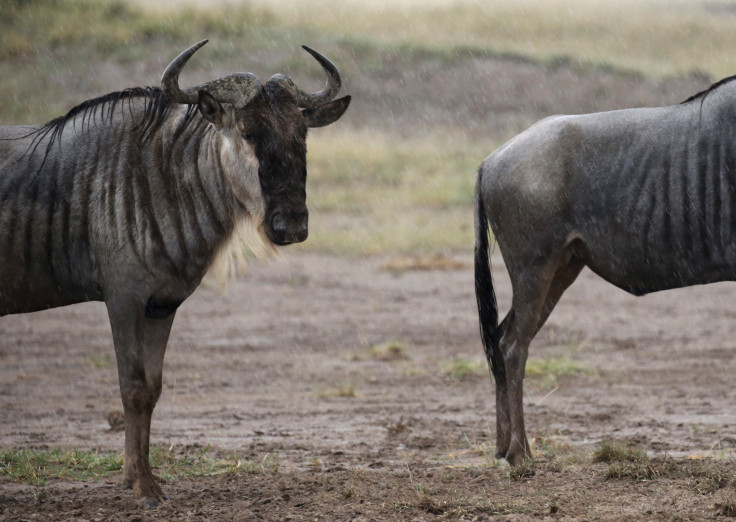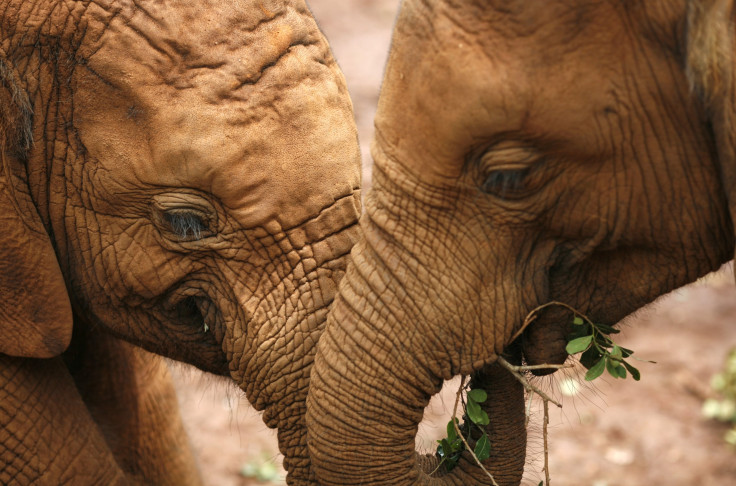Saving Earth With Earth: Rewilding May Be Answer To Curbing Climate Change
KEY POINTS
- Conservation "offers untapped potential as a solution to climate change," a new study's author said
- There are various important nature-based solutions to climate change that we can implement
- According to the IUCN, 10,967 species have increased likelihood of going extinct due to climate change
Rewilding the planet may not only help save creatures from extinction, it might also become our ally in fighting climate change.
A recent study has found the potentially critical role that such nature-based climate solutions may really play in saving our planet.
Restoring wildlife is an often overlooked, important solution that may be critical in the fight against climate change. Simply put, rewilding is the effort to restore the biodiversity and ecosystem, for instance by protecting the wilderness areas and reintroducing important species. Its main goal is said to be to help prevent the extinction of species and regain the function of an ecosystem without the need for human intervention.
But how is this related to climate change?
In the recent study, which was published in Nature Climate Change, researchers looked at natural climate solutions, particularly the role that animals play--the very animals that are also threatened by the many disastrous impacts of climate change.
"Natural climate solutions are being advanced to arrest climate warming by protecting and enhancing carbon capture and storage in plants, soils and sediments in ecosystems," the researchers wrote. "These solutions are viewed as having the ancillary benefit of protecting habitats and landscapes to conserve animal species diversity. However, this reasoning undervalues the role animals play in controlling the carbon cycle."
They found that protecting and restoring these animals may actually help "enhance natural carbon capture and storage." In fact, even just protecting and restoring nine, long-lived wildlife species (marine fish, whales, sharks, gray wolf, wildebeest, sea otter, musk ox, African forest elephant and American bison) could help capture 6.41 gigatons of carbon dioxide each year, according to rewilding organization, Re:Wild.
That's a substantial contribution.
"Collectively this would be more than 95% of the amount needed every year to meet the global target of removing 500 gigatons of carbon from the atmosphere by 2100, which would keep global warming below the 1.5-degree Celsius threshold," the organization noted.
Climate change has indeed been among the many major threats to the world's creatures. As we humans experience its devastating impacts, the animals that we are supposed to be co-existing with have also been facing the detrimental effects, from natural disasters to the loss of the very habitats they live in.
According to the International Union of Conservation of Nature (IUCN), 10,967 species on its Red List of Threatened Species have increased likelihood of going extinct because of climate change. The Bramble Cay melomys, whose only habitat was the island of Bramble Cay in the Great Barrier Reef, was the first mammal to have gone extinct "as a direct result of climate change," the organization noted. Its habitat was destroyed by the rising sea levels.
The results of the study showed just how important it is to protect and restore these creatures. Yes, conservation saves species from being lost to extinction. But the study shows, on a broader scale, how necessary these creatures are to their ecosystems, how important a role they play for the health of the planet--and now in the fight against climate change.
"Climate change is usually only seen as one of a number of threats to wildlife species," Andrew Tilker, study co-author and species conservation coordinator at Re:wild, said in the organization's release. "What we have found, however, is that the conservation of wildlife--allowing species to play their functional roles in ecosystems--offers untapped potential as a solution to climate change."
However, this does not mean rewilding alone would protect the planet. What it demonstrates is how rewilding, together with other efforts such as moving toward renewable energy, may actually be critical if we are to preserve the planet. And rewilding isn't the only natural climate solution that is currently being looked at to address climate change.
Preserving our pristine woodlands or what's called "frontier forests," for one, is said to be among "the most important" natural solutions to climate change, according to The Nature Conservancy, an environmental non-profit organization that aims to "create a world where people and nature can thrive." These intact forests can store massive amounts of carbon, which could be released if they are disturbed.
Reforesting the world's two billion hectares of forests that are already affected by deforestation or degradation may also be a key player, as trees are said to be excellent at capturing and storing carbon.
"We estimate that the world could capture three gigatons of CO2 annually--equivalent to taking more than 600 million cars off the roads--simply by planting more trees," the organization noted.
Making true and long-lasting changes to emission-contributing agricultural practices is also another natural climate solution, and so are ocean-based natural measures like re-growing help and restoring seagrass.
The bottom line is there are many nature-based solutions to climate change that we can actively implement together with the other efforts including, and importantly, the reduction of greenhouse gas emissions. A land stops absorbing carbon once it has reached its maximum, according to the American University, which is why it's important that solutions for absorbing carbon and also reducing emissions go together.
What's beautiful about these natural solutions is that, as the saying goes, they hit "two birds with one stone." We are saving these animals and the environment for their own sake, while also fighting climate change for us all.
As the study demonstrated, these important animals aren't just creatures that people need to save from the impacts of climate change and the many other human-related threats they face like poaching. They are, in many ways, our companions and allies in the fight to save the planet.
In the Serengeti, for instance, the grass that wildebeest feed on became fuel for wildfires when the wildebeest population dropped. This led to the release of carbon to the atmosphere, according to Re:wild. But when their population bounced back due to conservation efforts, the Serengeti turned into a "carbon sponge" that absorbs millions of tons of carbon each year.

"We call for new thinking that includes the restoration and conservation of wild animals and their ecosystem roles as a key component of natural climate solutions that can enhance the ability to prevent climate warming beyond 1.5 °C," the authors wrote.
Of course, not everyone can serve as a direct part in nature-based solutions. And for many, the simple changes that they make in their everyday lives are pretty much their most concrete contribution.
But being aware of these critical nature-based solutions may help open people's minds about the importance of conservation efforts, perhaps beyond what they might have thought of before.
It could encourage them to support conservation and environmental groups by donating or volunteering, or perhaps push them to be more curious about what their own country or even their own communities are doing (or not doing) to help the cause.
Even though many countries are moving toward the direction of supporting nature-based solutions, several still haven't. But there is hope that awareness of just how important natural solutions are, just how critical they may be, may provide that important push to finally take action.

© Copyright IBTimes 2025. All rights reserved.






















